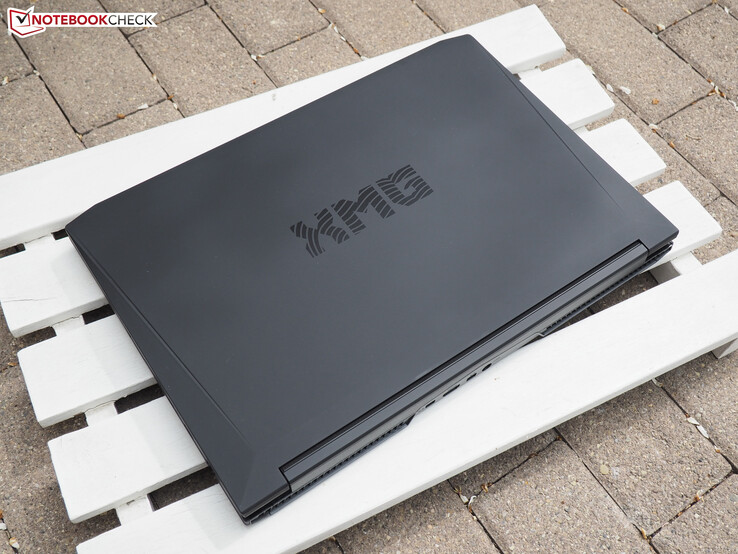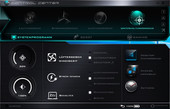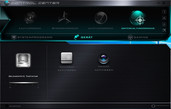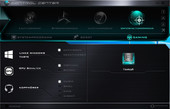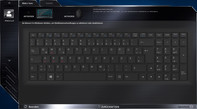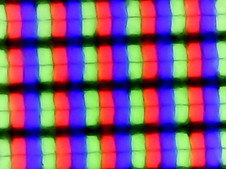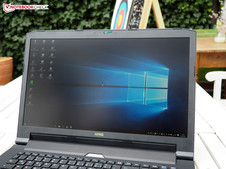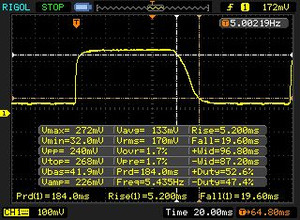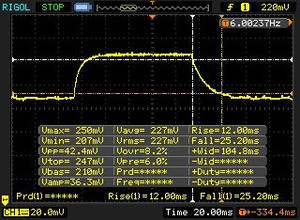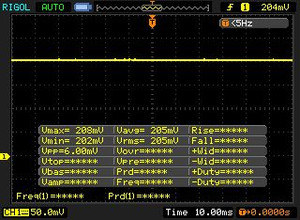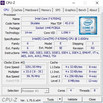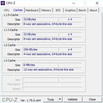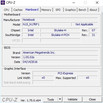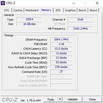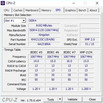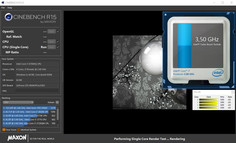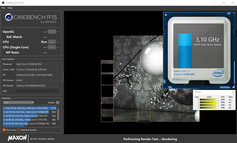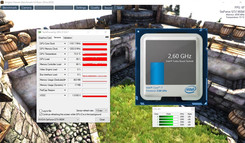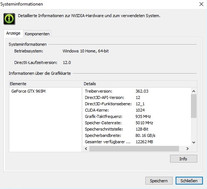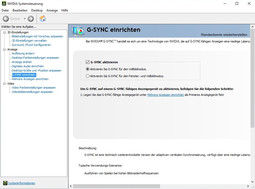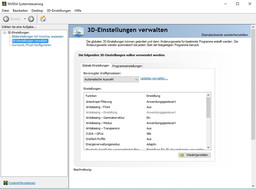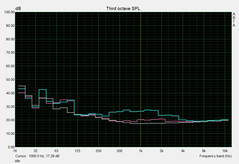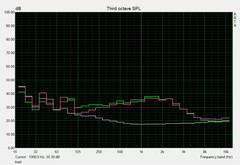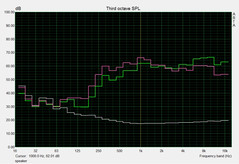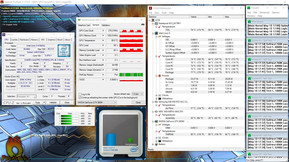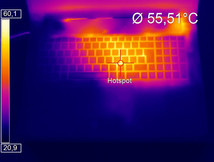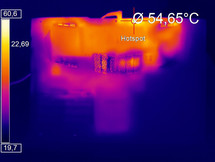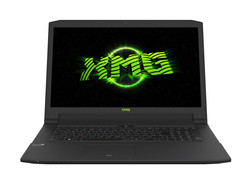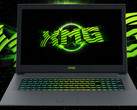Schenker XMG A726 (Clevo N170RF1-G) Notebook Review
For the original German review, see here.
Seven months after the XMG A706, it is now time for the brand new XMG A726 to go through our benchmarks. As with its siblings, the 17-inch gaming model can be configured extensively on the manufacturer's website.
There are no options other than an FHD panel with IPS technology for the display and a Core i7-6700HQ and a GeForce GTX 965M for CPU and GPU, respectively. But, the other components, including the DDR4 RAM (8 to 32 GB) and hard drive (M.2-SSD up to 512 GB + 2.5-inch drive up to 2000 GB) can be configured. The buyer may also select the optical drive, the Wi-Fi adapter, and the operating system.
The basic configuration of the 17-inch device costs 1449 Euros (~$1640). Those who prefer a solid-state drive, upgrade the RAM or have Windows 10 pre-installed, have to budget for more. Currently, our test configuration is available for 1754 Euros (~$1986). Other companies already offer notebooks with GeForce GTX 970M in this price range.
Overview
Compared to its XMG A716 and XMG A706 siblings with the same look, which are based on the Clevo Barebones N170RF (reviewed as MIFcom EG7) and N170RD, the N170RF1-G Barebone of the XMG A726 brings several improvements:
- DDR4 RAM vs. DDR3 RAM
- 4 vs. 2 GB VRAM
- HDMI 2.0 vs. HDMI 1.4 (for 4K at 60 Hz)
- 2x DisplayPort vs. 1x DisplayPort + VGA
- 3x USB 3.0 + 1x USB 3.1 Typ-C vs. 4x USB 3.0
- G-Sync support
G-Sync is probably one of the biggest highlights. Attention: Several Barebone resellers only use the N170RF1 (without G at the end of the name), which does not support G-Sync. Battery runtime enthusiasts can deactivate G-Sync via a tool (formerly only possible through a BIOS setting) and use Optimus instead. The option is called “GPU switch” (see screenshot #3). We ran our tests in the “MSHYBRID” mode, which enables the graphics switch.
Since it is similar to the already mentioned chassis, we will skip evaluating the chassis, connectivity, input devices and sound here. Information about these can be found here.
Display
Although the XMG A726 and the XMG A716/706 use the same panel, G-Sync is only enabled in the new barebone (Nvidia charges license fees).
| |||||||||||||||||||||||||
Brightness Distribution: 85 %
Center on Battery: 316 cd/m²
Contrast: 1317:1 (Black: 0.24 cd/m²)
ΔE ColorChecker Calman: 4.57 | ∀{0.5-29.43 Ø4.77}
ΔE Greyscale Calman: 5.15 | ∀{0.09-98 Ø5}
84% sRGB (Argyll 1.6.3 3D)
55% AdobeRGB 1998 (Argyll 1.6.3 3D)
61.5% AdobeRGB 1998 (Argyll 3D)
84.1% sRGB (Argyll 3D)
66.7% Display P3 (Argyll 3D)
Gamma: 2.57
CCT: 6833 K
| Schenker XMG A726 LG Philips LP173WF4-SPD1 (LGD046C) | Schenker XMG A706 LG Philips LP173WF4-SPD1 | MIFcom EG7 LG Philips LP173WF4-SPD1 (LGD046C) | Gigabyte P57W LG Philips LP173WF4-SPF1 (LGD0469) | Gigabyte P37X v5 LP173WF4-SPF1 (LGD0469) | |
|---|---|---|---|---|---|
| Display | 0% | -1% | 0% | 1% | |
| Display P3 Coverage (%) | 66.7 | 66.4 0% | 66.1 -1% | 66.5 0% | 67.4 1% |
| sRGB Coverage (%) | 84.1 | 83.8 0% | 83.1 -1% | 84.4 0% | 85 1% |
| AdobeRGB 1998 Coverage (%) | 61.5 | 61.3 0% | 60.7 -1% | 61.7 0% | 62.2 1% |
| Response Times | -10% | 2% | -13% | ||
| Response Time Grey 50% / Grey 80% * (ms) | 37 ? | 41 ? -11% | 37 ? -0% | 45 ? -22% | |
| Response Time Black / White * (ms) | 25 ? | 27 ? -8% | 24 ? 4% | 26 ? -4% | |
| PWM Frequency (Hz) | |||||
| Screen | -2% | -4% | -6% | -4% | |
| Brightness middle (cd/m²) | 316 | 344 9% | 330 4% | 286 -9% | 306 -3% |
| Brightness (cd/m²) | 303 | 322 6% | 312 3% | 274 -10% | 294 -3% |
| Brightness Distribution (%) | 85 | 88 4% | 89 5% | 87 2% | 89 5% |
| Black Level * (cd/m²) | 0.24 | 0.3 -25% | 0.32 -33% | 0.31 -29% | 0.42 -75% |
| Contrast (:1) | 1317 | 1147 -13% | 1031 -22% | 923 -30% | 729 -45% |
| Colorchecker dE 2000 * | 4.57 | 4.8 -5% | 4.98 -9% | 4.49 2% | 3.51 23% |
| Colorchecker dE 2000 max. * | 8.24 | 7.83 5% | 8.39 -2% | ||
| Greyscale dE 2000 * | 5.15 | 4.91 5% | 4.39 15% | 4.76 8% | 2.23 57% |
| Gamma | 2.57 86% | 2.37 93% | 2.26 97% | 2.47 89% | 2.51 88% |
| CCT | 6833 95% | 6796 96% | 6049 107% | 6843 95% | 6346 102% |
| Color Space (Percent of AdobeRGB 1998) (%) | 55 | 55 0% | 55 0% | 55 0% | 56 2% |
| Color Space (Percent of sRGB) (%) | 84 | 84 0% | 83 -1% | 84 0% | 85 1% |
| Total Average (Program / Settings) | -1% /
-2% | -5% /
-4% | -1% /
-4% | -5% /
-4% |
* ... smaller is better
The LG Philips LP173WF4-SPD1 performed well to very well in the display measurements. 300 cd/m² and a contrast of about 1300:1 are respectable. Moreover, the black value of 0.24 cd/m² is also impressive.
Otherwise, there is hardly anything to complain about. Color precision and gamut (84% sRGB, 55% AdobeRGB) are definitely sufficient for a gaming notebook. The viewing angles also do not have to hide behind the competitors. This is not surprising, since the XMG A726 uses an IPS panel.
Display Response Times
| ↔ Response Time Black to White | ||
|---|---|---|
| 25 ms ... rise ↗ and fall ↘ combined | ↗ 5 ms rise | |
| ↘ 20 ms fall | ||
| The screen shows relatively slow response rates in our tests and may be too slow for gamers. In comparison, all tested devices range from 0.1 (minimum) to 240 (maximum) ms. » 58 % of all devices are better. This means that the measured response time is worse than the average of all tested devices (20.2 ms). | ||
| ↔ Response Time 50% Grey to 80% Grey | ||
| 37 ms ... rise ↗ and fall ↘ combined | ↗ 12 ms rise | |
| ↘ 25 ms fall | ||
| The screen shows slow response rates in our tests and will be unsatisfactory for gamers. In comparison, all tested devices range from 0.165 (minimum) to 636 (maximum) ms. » 52 % of all devices are better. This means that the measured response time is worse than the average of all tested devices (31.6 ms). | ||
Screen Flickering / PWM (Pulse-Width Modulation)
| Screen flickering / PWM not detected | |||
In comparison: 53 % of all tested devices do not use PWM to dim the display. If PWM was detected, an average of 8084 (minimum: 5 - maximum: 343500) Hz was measured. | |||
Performance
With a solid-state drive, the XMG A726 is one of the lower premium segment and thanks to the GeForce GTX 965M, it is an entry into upper class gaming. The 17-inch device is also cutting-edge thanks to its USB 3.1 Type-C port and the use of DDR4 RAM, even though compared to DDR3 the performance gain is very small.
Processor
As expected the processor is a quad core chip from Intel's Skylake generation. The Core i7-6700HQ contains 6 MB L3 cache and is specified with a TDP of 45 watts. Only at CPU load can the 14 nm model fully utilize its Turbo potential. For example, the Core i7-6700HQ clocks at between 3.1 GHz (multi core test) and 3.5 GHz (single core test) in Cinebench R15.
If the GPU is stressed simultaneously, the Turbo takes a break and runs at its base clock of only 2.6 GHz. The MIFcom EG7 suffers from the same problem. However, this hardly brings disadvantages in everyday gaming, since the GPU is the limiting factor in most games.
If you run simple tasks such as office, web surfing, or videos on the 17-inch device, the system uses the processor chip, HD Graphics 530, instead of the Nvidia graphics card in hybrid mode.
The CPU benchmarks did not bring any surprises. In Cinebench R11.5 as well as Cinebench R15, the XMG A726 is on par with other 6700HQ devices.
| Cinebench R15 | |
| CPU Single 64Bit | |
| Schenker XMG A706 | |
| MIFcom EG7 | |
| Schenker XMG A726 | |
| Gigabyte P37X v5 | |
| Gigabyte P57W | |
| CPU Multi 64Bit | |
| Gigabyte P37X v5 | |
| Schenker XMG A726 | |
| Gigabyte P57W | |
| MIFcom EG7 | |
| Schenker XMG A706 | |
| Cinebench R11.5 | |
| CPU Single 64Bit | |
| MIFcom EG7 | |
| Gigabyte P37X v5 | |
| Gigabyte P57W | |
| Schenker XMG A706 | |
| Schenker XMG A726 | |
| CPU Multi 64Bit | |
| Schenker XMG A726 | |
| MIFcom EG7 | |
| Gigabyte P37X v5 | |
| Gigabyte P57W | |
| Schenker XMG A706 | |
System Performance
We could not detect any anomalies in system performance. For example, PCMark 7 reports a total score of 5977 points, which is usual for the hardware used. Note: The results of the system tests depend on the used storage device.
| PCMark 7 Score | 5977 points | |
Help | ||
Storage Device
Unlike the other Clevo Barebones, the N170RF1-G can be equipped with only two storage devices unless you use a caddy instead of the optical drive. The operating system is installed on the 250 GB variant of the Samsung 850 EVO. While the M.2 model cannot keep up with PCIe or NVMe SSDs in sequential performance, everyday Windows experience is similarly fast. A Western Digital Blue HDD with 1000 GB is used as secondary storage device and also performs decently.
| Schenker XMG A726 Samsung SSD 850 EVO M.2 250 GB | Schenker XMG A706 Samsung SSD 850 EVO M.2 250 GB | MIFcom EG7 Samsung SSD 850 EVO M.2 250 GB | Gigabyte P57W Lite-On IT L8T-256L9G | Gigabyte P37X v5 Samsung SM951 MZVPV256HDGL m.2 PCI-e | |
|---|---|---|---|---|---|
| AS SSD | -5% | -5% | -19% | ||
| Seq Read (MB/s) | 506 | 504 0% | 510 1% | 486.7 -4% | |
| Seq Write (MB/s) | 470.3 | 469.7 0% | 488.6 4% | 406.2 -14% | |
| 4K Read (MB/s) | 40.05 | 35.54 -11% | 34.77 -13% | 28.77 -28% | |
| 4K Write (MB/s) | 91.8 | 77.7 -15% | 78 -15% | 55.5 -40% | |
| Score Total (Points) | 1024 | 1042 2% | 994 -3% | 911 -11% |
Graphics Card
Schenker Technologies uses a DirectX 12 capable model from Nvidia. The GeForce GTX 965M variant from 2016 is based on the Maxwell architecture and ranks in halfway between the GTX 970M and the cheaper GTX 960M, which is only suitable for hard-core gamers to some extent.
We appreciate that the manufacturer does not use 2 GB but 4 GB of GDDR5 VRAM. As a result, the XMG A726 is more future-proof than comparable GTX 965M notebooks whose VRAM capacity is used to the full extent in several games or settings. Apart from “Assassin's Creed Syndicate”, the “Rise of the Tomb Raider” for example, also recommends as much GB as possible. However, it has to be mentioned that the performance of the GTX 965M is usually restricted due to other factors (shader count etc.). A GTX 980M or GTX 980 bring a much higher base performance and would suffer even more from too low a VRAM capacity.
| 3DMark 11 Performance | 8074 points | |
| 3DMark Ice Storm Standard Score | 71664 points | |
| 3DMark Cloud Gate Standard Score | 19524 points | |
| 3DMark Fire Strike Score | 5339 points | |
Help | ||
In the synthetic graphics tests, double the VRAM capacity hardly brings any advantages. Regardless of whether 3DMark 11 or 3DMark 13 is used: The XMG A726 is almost as fast as the MIFcom EG7, which uses a GTX 965M with only 2 GB of VRAM.
| 3DMark | |
| 1920x1080 Fire Strike Score | |
| Gigabyte P37X v5 | |
| Gigabyte P57W | |
| Schenker XMG A726 | |
| MIFcom EG7 | |
| Schenker XMG A706 | |
| 1920x1080 Fire Strike Graphics | |
| Gigabyte P37X v5 | |
| Gigabyte P57W | |
| Schenker XMG A726 | |
| MIFcom EG7 | |
| Schenker XMG A706 | |
| 3DMark 11 | |
| 1280x720 Performance | |
| Gigabyte P37X v5 | |
| Gigabyte P57W | |
| Schenker XMG A726 | |
| MIFcom EG7 | |
| Schenker XMG A706 | |
| 1280x720 Performance GPU | |
| Gigabyte P37X v5 | |
| Gigabyte P57W | |
| Schenker XMG A726 | |
| MIFcom EG7 | |
| Schenker XMG A706 | |
Gaming Performance
In order to evaluate the gaming performance, we have installed 7 games from 2015 to 2016. While less demanding games run smoothly with maximum details (FIFA 16), graphic intensive games such as “Need for Speed”, “Anno 2205”, and “Far Cry Primal” run decently with only high settings. “XCOM 2”, “The Division”, and “Hitman” only achieved above 40 fps at medium details in the native resolution of 1920x1080 pixels.
So, if you always want to enjoy highest graphics quality, you had better buy a notebook with GeForce GTX 970M or better. If compromises are acceptable, the Maxwell chip of the XMG A726 is a good choice in our opinion. Note: Nvidia will soon launch the successor generation, Pascal, which, as usual, promises higher performance.
| low | med. | high | ultra | |
|---|---|---|---|---|
| FIFA 16 (2015) | 237.6 | 187.4 | 127.4 | |
| Anno 2205 (2015) | 122.8 | 100.7 | 45.6 | 15.8 |
| XCOM 2 (2016) | 88.9 | 43.3 | 26.6 | 12.2 |
| Far Cry Primal (2016) | 97 | 46 | 41 | 28 |
| The Division (2016) | 116.2 | 74.8 | 36 | 27.6 |
| Hitman 2016 (2016) | 67 | 62.9 | 26.6 | 25 |
| Need for Speed 2016 (2016) | 82.4 | 73.6 | 43.6 | 32.3 |
Emissions
System Noise
Despite the almost identical components, the N170RF1-G Barebone was louder than its 17-inch N170RF (MIFcom EG7) sibling in the test. As far as we know, it is unlikely that this has been caused by double the VRAM capacity. We suspect a different fan control, which pays slightly more attention to temperatures. Instead of a maximum of 43 dB(A), the XMG A726 reached up to 46 dB(A) in 3D mode. During 3DMark06, we measured between 36 and 45 dB(A), which is clearly audible. Even slimmer gaming notebooks such as the MSI GS70 6QE or the Gigabyte P37X v5 work rather quieter under these conditions. However, the XMG A726 never gets annoying. In everyday gaming, the system noise is set in perspective when using a headset or a loud speaker volume.
Suboptimal: As in other Clevo Barebones, sometimes the cooling system speeds up unnecessarily during simple tasks. Otherwise, we liked the fan control when the system is running idle. Depending on the situation, the fans are completely off or produce a very quiet noise that is on par with the hard drive (31 to 32 dB). Without an HDD, the device would fall silent time and again.
Noise level
| Idle |
| 31 / 32 / 36 dB(A) |
| HDD |
| 32 dB(A) |
| DVD |
| 35 / dB(A) |
| Load |
| 43 / 46 dB(A) |
 | ||
30 dB silent 40 dB(A) audible 50 dB(A) loud |
||
min: | ||
| Schenker XMG A726 GeForce GTX 965M, 6700HQ | Schenker XMG A706 GeForce GTX 960M, 6700HQ | MIFcom EG7 GeForce GTX 965M, 6700HQ | Gigabyte P57W GeForce GTX 970M, 6700HQ | Gigabyte P37X v5 GeForce GTX 980M, 6700HQ | |
|---|---|---|---|---|---|
| Noise | 4% | 3% | 1% | -3% | |
| off / environment * (dB) | 30 | 30 -0% | |||
| Idle Minimum * (dB) | 31 | 29.2 6% | 32 -3% | 32 -3% | 32 -3% |
| Idle Average * (dB) | 32 | 30.4 5% | 33 -3% | 33 -3% | 34 -6% |
| Idle Maximum * (dB) | 36 | 37.3 -4% | 34 6% | 37 -3% | 36 -0% |
| Load Average * (dB) | 43 | 39.8 7% | 39 9% | 37 14% | 40 7% |
| Load Maximum * (dB) | 46 | 42.2 8% | 43 7% | 47 -2% | 51 -11% |
* ... smaller is better
Temperature
The case temperatures of the XMG A726 are about the same as the MIFcom EG7's. However, you can only compare the values to some extent, since both systems show a different throttling behavior when running FurMark and Prime95. While the CPU clock in particular falls in the N170RF Barebone (800 MHz), the GPU clock throttles in the N170RF1-G (drops to 200 to 300 MHz). However, throttling is not to be expected during everyday use. All tested benchmarks delivered impeccable results.
By the way: A maximum of 49 °C (~120 °F) on the top side and a maximum of 47 °C (~117 °F) on the underside are lower than those in most gaming representatives. Above 50 or even 60 °C (~122 to ~140 °F) are not uncommon. Further positive aspects are the cool palm rests, which do not exceed 26 °C (~79 °F) even under full load.
(-) The maximum temperature on the upper side is 48.8 °C / 120 F, compared to the average of 40.4 °C / 105 F, ranging from 21.2 to 68.8 °C for the class Gaming.
(-) The bottom heats up to a maximum of 46.9 °C / 116 F, compared to the average of 43.3 °C / 110 F
(+) In idle usage, the average temperature for the upper side is 29.4 °C / 85 F, compared to the device average of 33.9 °C / 93 F.
(+) The palmrests and touchpad are cooler than skin temperature with a maximum of 26 °C / 78.8 F and are therefore cool to the touch.
(+) The average temperature of the palmrest area of similar devices was 28.8 °C / 83.8 F (+2.8 °C / 5 F).
| Schenker XMG A726 GeForce GTX 965M, 6700HQ | Schenker XMG A706 GeForce GTX 960M, 6700HQ | MIFcom EG7 GeForce GTX 965M, 6700HQ | Gigabyte P57W GeForce GTX 970M, 6700HQ | Gigabyte P37X v5 GeForce GTX 980M, 6700HQ | |
|---|---|---|---|---|---|
| Heat | -10% | -11% | 2% | -7% | |
| Maximum Upper Side * (°C) | 48.8 | 53.7 -10% | 56.2 -15% | 55.1 -13% | 52.7 -8% |
| Maximum Bottom * (°C) | 46.9 | 61.1 -30% | 52.4 -12% | 55.2 -18% | 70 -49% |
| Idle Upper Side * (°C) | 34.9 | 37.5 -7% | 39.3 -13% | 30.8 12% | 30.9 11% |
| Idle Bottom * (°C) | 37.9 | 35.5 6% | 39.8 -5% | 27.1 28% | 31 18% |
* ... smaller is better
Energy Management
Power Consumption
With the Optimus technology, the XMG A726 is quite frugal. 10 to 22 watts while idling guarantee a decent mobility. Our measurement instrument showed between 79 watts (average value during the first scene of 3DMark 06) and 151 watts. This is slightly high when you consider the specification of the power adapter (120 W, but we do not know the exact effectiveness), since GPU and CPU throttle during the stress test.
| Off / Standby | |
| Idle | |
| Load |
|
Key:
min: | |
| Schenker XMG A726 GeForce GTX 965M, 6700HQ | Schenker XMG A706 GeForce GTX 960M, 6700HQ | MIFcom EG7 GeForce GTX 965M, 6700HQ | Gigabyte P57W GeForce GTX 970M, 6700HQ | Gigabyte P37X v5 GeForce GTX 980M, 6700HQ | |
|---|---|---|---|---|---|
| Power Consumption | 23% | -5% | -8% | -36% | |
| Idle Minimum * (Watt) | 10 | 5.4 46% | 11 -10% | 11 -10% | 16 -60% |
| Idle Average * (Watt) | 16 | 11 31% | 17 -6% | 17 -6% | 21 -31% |
| Idle Maximum * (Watt) | 22 | 16.5 25% | 24 -9% | 22 -0% | 28 -27% |
| Load Average * (Watt) | 79 | 77.8 2% | 77 3% | 85 -8% | 96 -22% |
| Load Maximum * (Watt) | 151 | 137.7 9% | 155 -3% | 178 -18% | 215 -42% |
* ... smaller is better
Battery Life
The battery life is nothing to sneeze at. Although the XMG A726 lasts only about 2 hours with active GeForce GTX 965M (Battery Eater Classic Test @100% brightness), just over 5 hours of Wi-Fi surfing at medium brightness and up to 8 hours when running idle (Battery Eater Readers Test @0% brightness) are impressive. 62 Wh make for an about mid-range battery life. Notebooks such as the Gigabyte P57W or P37X v5 with larger batteries do not necessarily keep the system running longer.
| Schenker XMG A726 62 Wh | Schenker XMG A706 62 Wh | MIFcom EG7 62 Wh | Gigabyte P57W 75.81 Wh | Gigabyte P37X v5 76 Wh | |
|---|---|---|---|---|---|
| Battery runtime | 23% | 4% | 3% | -12% | |
| Reader / Idle (h) | 7.9 | 11.8 49% | 7.6 -4% | 7.7 -3% | 6.4 -19% |
| WiFi v1.3 (h) | 4.8 | 5.5 15% | 5.6 17% | 4.2 -12% | |
| Load (h) | 1.8 | 1.9 6% | 2 11% | 1.7 -6% | 1.7 -6% |
| H.264 (h) | 4.7 | 4.4 | 4.9 | 5.6 | |
| Gaming (h) | 0.8 |
Pros
Cons
Verdict
In view of the hardware, the Barebone manufacturer Clevo has changed the right things. The biggest criticisms of the chassis of the N170RF predecessor included the missing USB-3.1 Gen2 support and the meager VRAM. As part of the update the RAM and the HDMI port were also upgraded.
However, the behavior of the CPU clock (no Turbo in 3D mode), the brightness distribution of the display (screen bleeding), and the sound could still be improved. The quality of the integrated speakers is quite poor. Meanwhile, the sensitive soft touch finish did not bother us at all.
The contrast-rich IPS panel, good input devices, and always cool palm rests are the positive aspects. Nvidia's G-Sync technology is a highlight, which guarantees a smooth display by eliminating screen tearing and minimizing display stutter and input lags. Moreover, the individual configuration and the clean Windows installation are noteworthy. Unlike the other manufacturers, Schenker has not installed bloatware.
However, we would recommend at least a GeForce GTX 970M to demanding gamers. The GTX 965M does not have enough performance reserves for great graphics quality in all settings.
Schenker XMG A726
- 05/12/2016 v5.1 (old)
Florian Glaser





